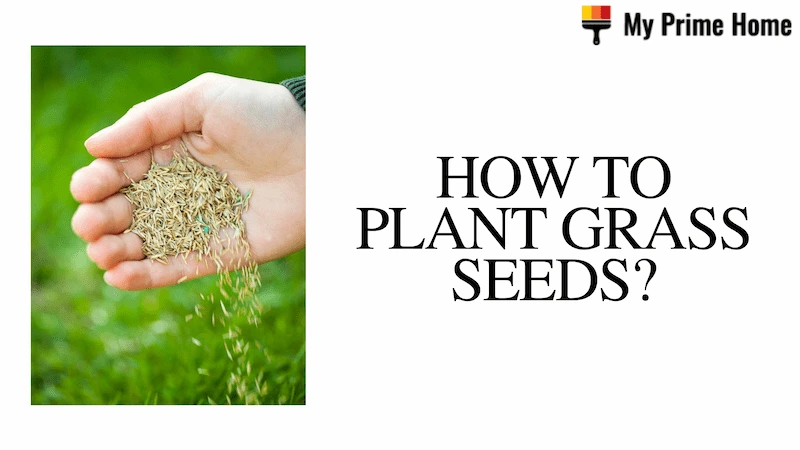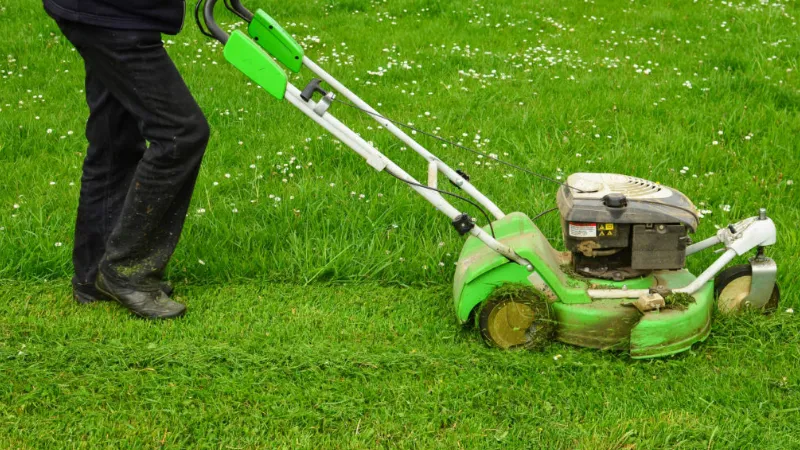To begin with, how to water air plants properly to keep them healthy? Follow this professional advice on the best technique, frequency of watering, and type of water to use when watering air plants to ensure proper care.
Below will tell you four methods to water air plants, including dunking, soaking, spraying, and misting. Please read on for more detailed information.
How to Water Air Plants?
Your air plant needs water about once a week to stay healthy and happy. Watering your air plants with distilled water is not recommended because the distillation process removes vital nutrients. Instead, use bottled water or filtered tap water. Here are the effective methods on how to water air plants:
Dunking
For plants that require less water, like the xerographica air plant, which is accustomed to living in drier desert-like conditions, this is a great technique to use. This can also be used for other “xeric” varieties such as the duratii and other plants that prefer less water and more sun. With this watering technique, you essentially fill a bowl, sink, or other container with water and repeatedly submerge the plant to make sure it is completely saturated. As always, shake off any excess water from the plant gently and place it somewhere where there is good airflow so that it can dry out within a few hours.
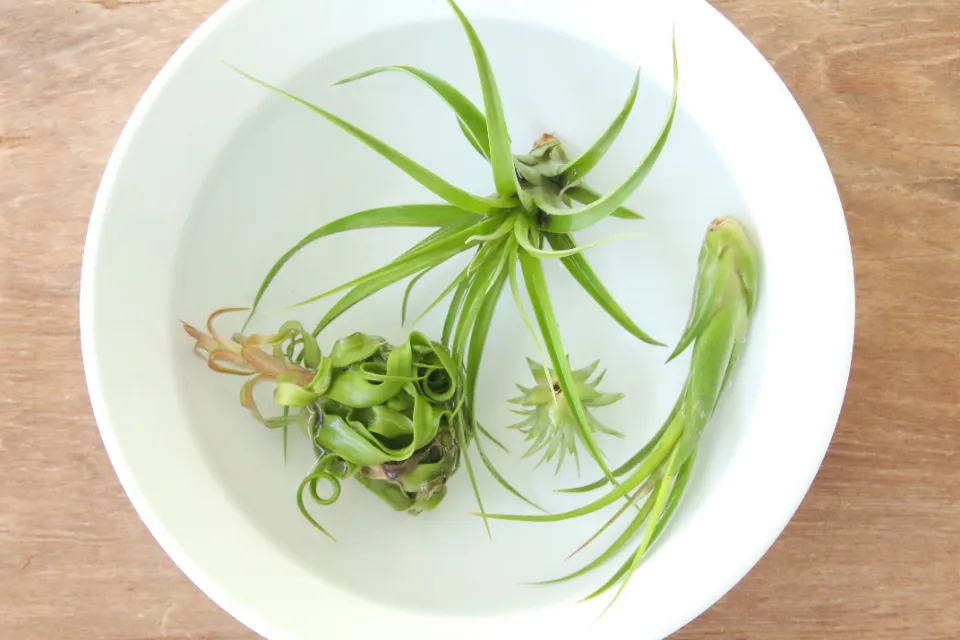
Soaking
The best way to make sure your plants are getting enough water is to soak them. Because they require less water than other air plants, some plants, like the xerographica, prefer the dunking method to the soaking method. For the soaking method, we advise soaking the plants in a bowl of water for at least 15 to 20 minutes. Additionally, you can incorporate a longer soak that can last an hour or two once a week or every other week. This will encourage plants that may have become a little dehydrated to wake up and rehydrate. The soaking method is suggested for green/mesic type plants like aeranthos, capitata, bracyhcaulous, etc. and is not suggested for plants like xerographica and streptophylla.
The risk of spreading fungi diseases among your plants is the biggest drawback of collectively soaking your plants. So, after the other plants have been watered, pull the one that appears to have fungus or is beginning to rot apart and water it separately.
We suggest beginning with once or twice weekly soaks for around 15 minutes and monitoring the plants’ reactions for the majority of environments and plants. Do they appear to close up or do they get dry tips? If so, you’ll have to soak more often. As long as the plant is able to dry out fairly quickly and doesn’t stay wet for protracted periods of time, you could theoretically soak your plant every day. Thankfully, the majority of plants and environments won’t require daily soakings, so we don’t advise it.

Spraying
Spraying will not be compared to misting for the purposes of this discussion. When we talk about spraying your air plants, we mean spraying them with a hose or sprayer until the plants are completely saturated and the water starts to run off. In order to ensure that the entire plant can get wet and absorb enough water, the goal is to simulate a nice rain. Due to the difficulty of soaking and dunking large quantities of plants, this is the method that most growers and collectors with large plant collections use. This method has the benefit of making it simple to water a lot of plants and the ability to directly inject fertilizers and fungicides into a mixing system, but there are also drawbacks. Inability to prevent water from sitting in the plant’s cups increases the risk of rot or fungus, and if the right conditions exist, sitting water in a Tillandsia plant’s cups will encourage rot or fungus.
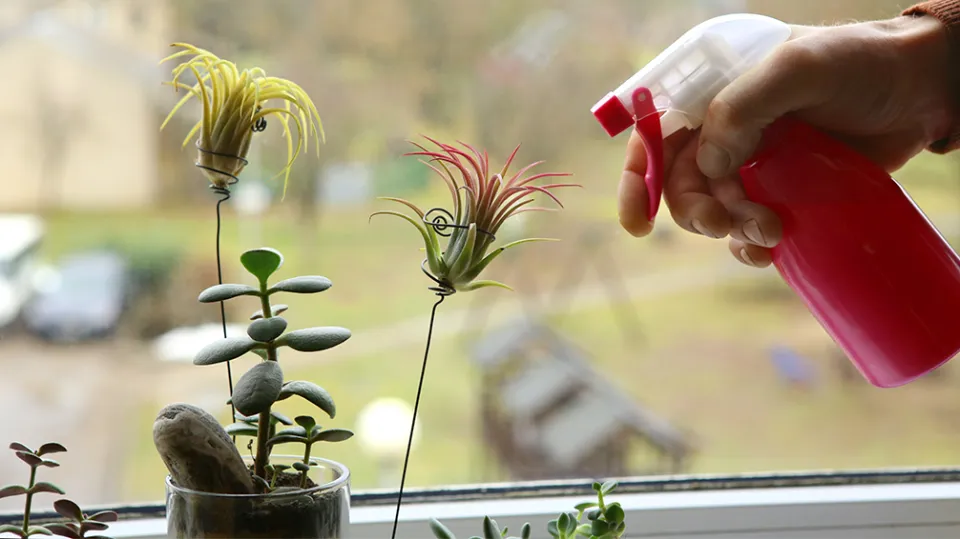
Misting
Spraying or misting air plants a few times a week can help supplement your weekly soaks but, on its own, it usually does not provide enough steady moisture. However, this method can be useful for plants that are growing on support or for blooming air plants (more information is provided below). It is also beneficial for Spanish moss, an air plant that requires a little more effort to water by soaking. It can’t endure being wet for very long. Because of this sensitivity to excess moisture, Spanish moss is “one of the few air plants some gardeners have better luck with frequent (and I’m talking about daily, or extremely frequent, misting.
Top watering tips:
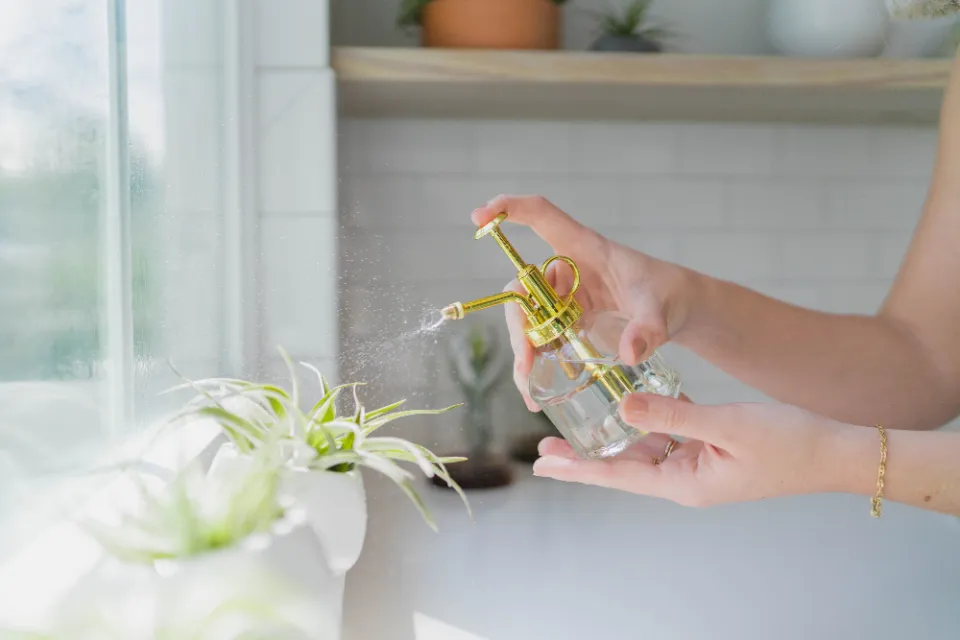
Should I Mist My Air Plants?
To mist your air plant with water from a misting bottle a few times per week, many garden centers and plant stores will advise you. I don’t think the plant will benefit much from this, personally. The air plant doesn’t get enough moisture from spritzing because it is done inconsistently enough. Your only option for watering your air plant should not be misting.
Given that greenhouses are already humid, they are simply misted in garden centers and greenhouses. And you can get away with spritzing them if you live in a humid area (or a greenhouse). The secret is soaking air plants in a bath before using them as houseplants for the rest of us.
Misting might be your only option if your air plant is glued or stuck in a terrarium and cannot be removed. If so, mist it frequently to make sure it gets the most water while avoiding letting water pool at the base. However, I strongly advise against putting air plants anywhere they can’t be taken out and cleaned!
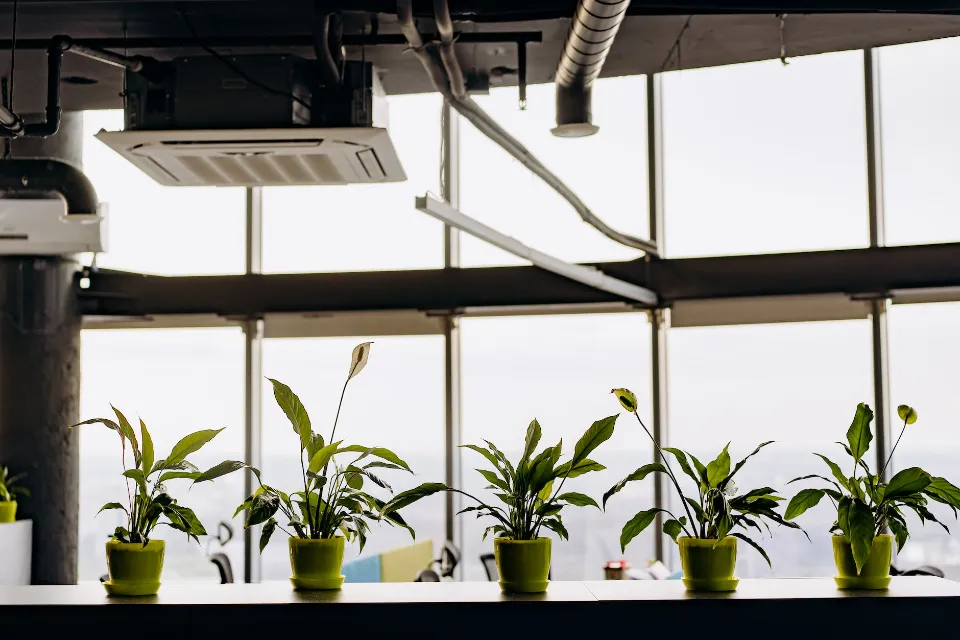
How Often to Water Air Plants?
How often you water your Tillandsia depends on the humidity; and whether you have a xeric variety from an arid region, or a mesic variety from a humid climate. Xeric air plants might need to be watered less frequently than mesic varieties. As a general starting point, we recommend giving your air plant a 1-hour soak once a week.
Aside from watering according to a set schedule, you can tell if your air plant needs water by closely inspecting the leaves. As the plant uses up moisture, each leaf’s edges will curl inward along their entire length. And although thirsty air plants don’t wilt as obviously as other plants do, the whole plant will feel limp.
Signs That Your Air Plant is Overwatered
One of the most frequent reasons for indoor air plant deaths is overwatering because it is not always simple to determine when they need to be watered. It’s possible that you overwatered your air plant if you see it losing leaves quickly or if the base of the plant starts to look brown and mushy. Unfortunately, there is not much you can do to save an overwatered air plant once the damage has already been done. Your best bet for reviving a soggy air plant is to set it aside for a few weeks and stop watering it.
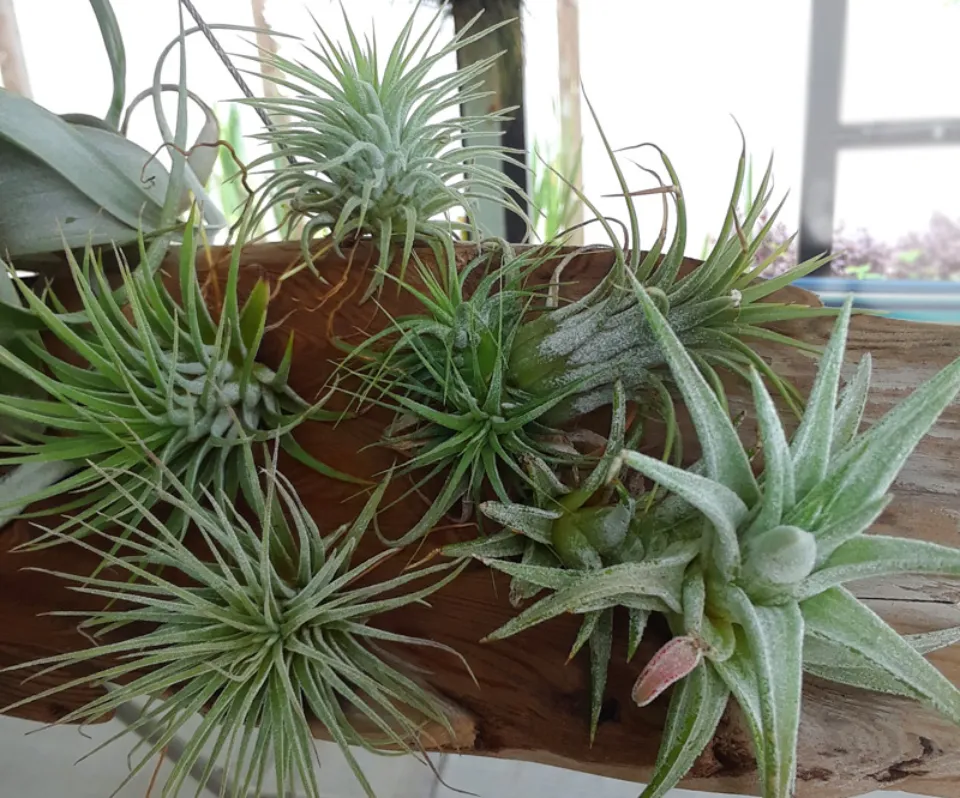
Frequently Asked Questions
What’s the Best Way to Dry Air Plants After Watering Them?
It’s crucial to keep your air plants away from excessive moisture, just like you would with most plants. If you can, gently pat your air plants dry with a paper towel after you’ve watered them. Be sure to shake your air plants off well. For additional moisture removal, place them in front of a gentle fan. Don’t put your air plants back on display in a cloche, terrarium, or other enclosed container until they are completely dry.
Should Air Plants Be Watered Less Often in Winter?
Winter brings colder temperatures and drier air to many climates, two elements that can be disruptive to air plants. Aim to provide your air plant with more sunlight and a little bit more water than usual, either through an extra watering or additional misting, to make up for the loss of heat and humidity in the winter.
What is the Best Way to Display Air Plants?
There isn’t a particularly good way to display air plants because they don’t need to be anchored in soil. To many areas of your house, they can add a touch of greenery and a distinctive form. Use their low upkeep appeal to your advantage and style them in an eye-catching way, such as strewn across a bookshelf, grouped on a windowsill, or hung on a wall.
Can You Soak Air Plants in Tap Water?
You don’t want to use tap water or filtered water. The minerals and chemicals in city tap water tend to be less. Many of the natural minerals and nutrients that are advantageous to air plants are removed from filtered water.
Summary: How to Water Air Plants?
If you water your air plants at night, it could interfere with their ability to breathe. Instead, water them in the morning to make sure they have time to fully dry.
Remove the air plants from their display area and immerse them in a bowl or sink with enough water to completely cover them. This is acceptable; just make sure that the majority of each air plant is submerged in the water. Some of the plants will float up above the water. Give them an hour in the tub.
Each plant should be taken out, held upside down, and vigorously shaken to remove any excess water that may be collecting at the base of the inner leaves. After that, set your air plant upside down on a towel and in a light location. Depending on when it is completely dry, leave it to sit for one to three hours. Make sure there isn’t any standing water because that could cause your air plant to rot.
Until it’s time to give your air plants another bath, put them back in their usual location.
If you have any questions, please leave a comment. My Prime Home tries to give you the best home improvement information. Don’t forget to share the post. Thank you for reading.
Read more:

